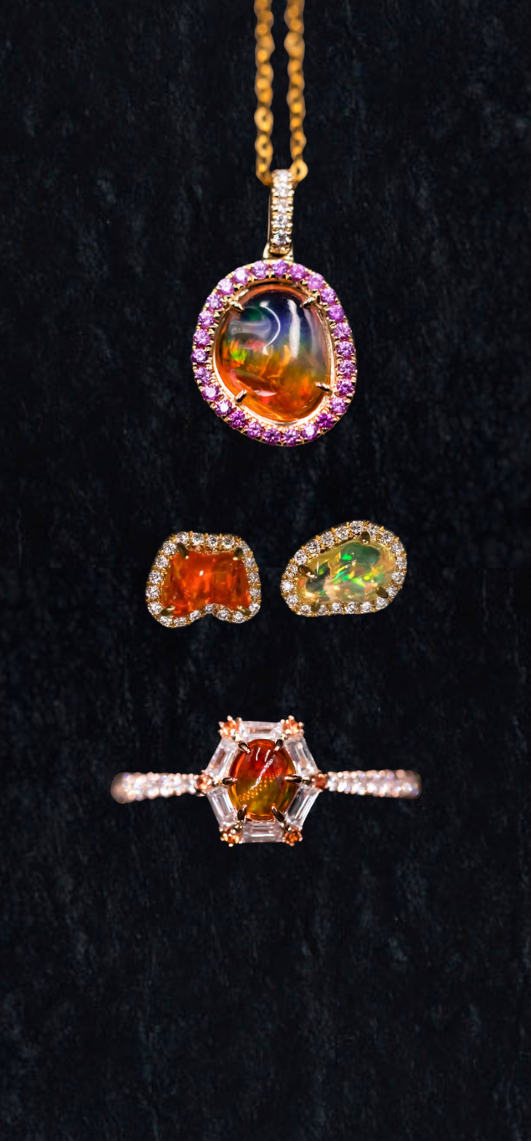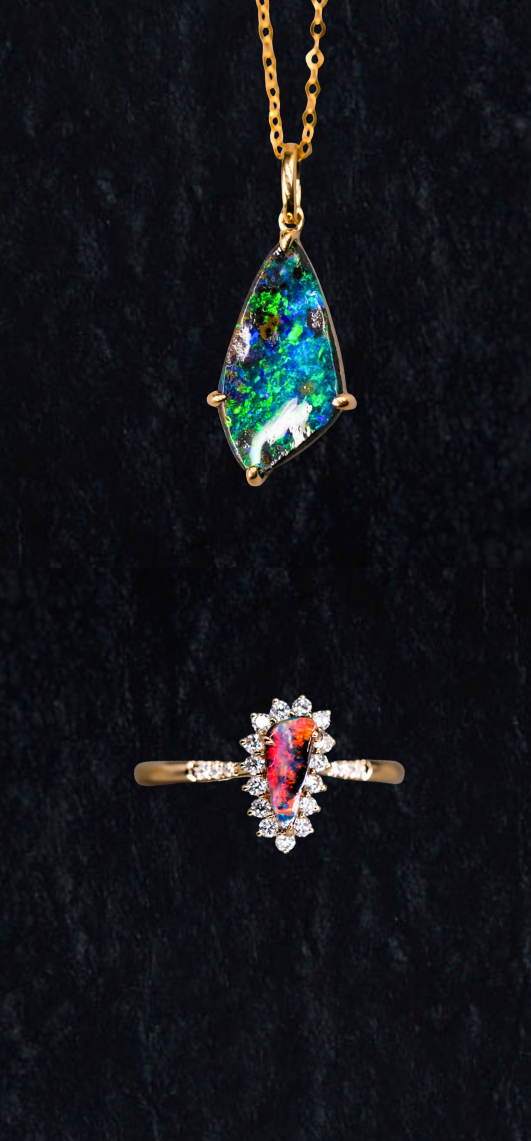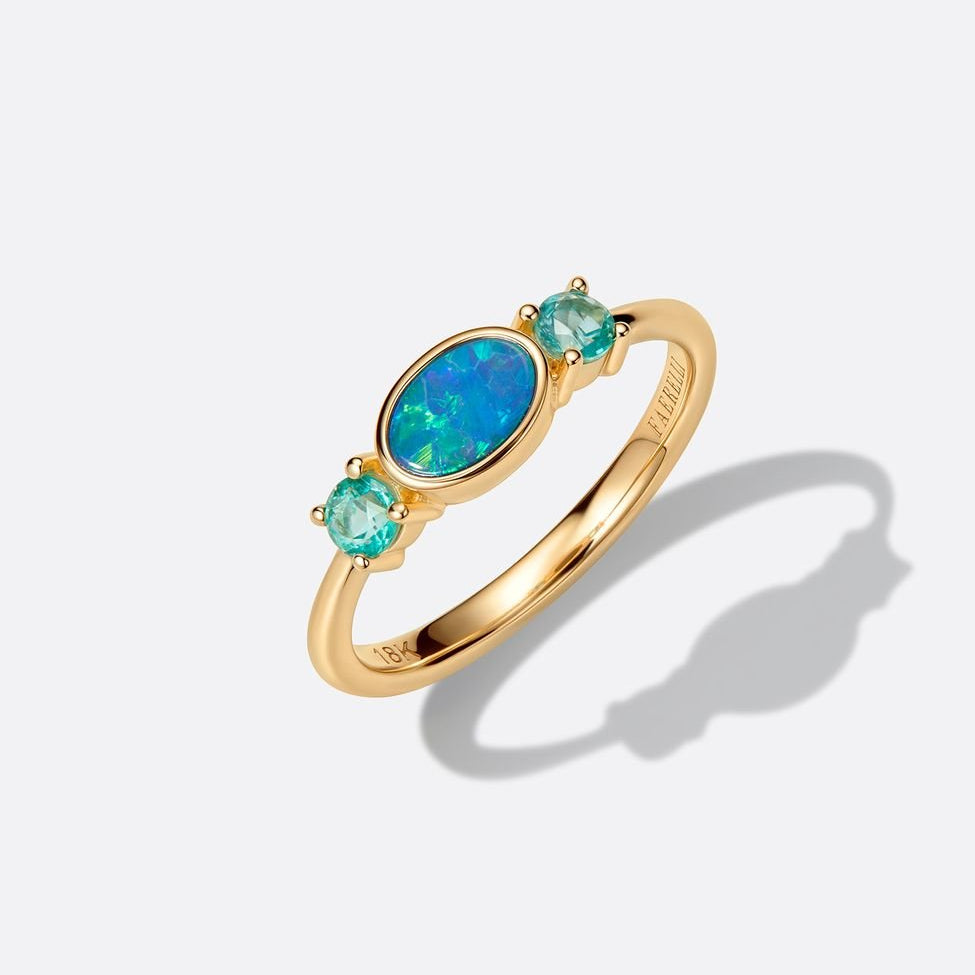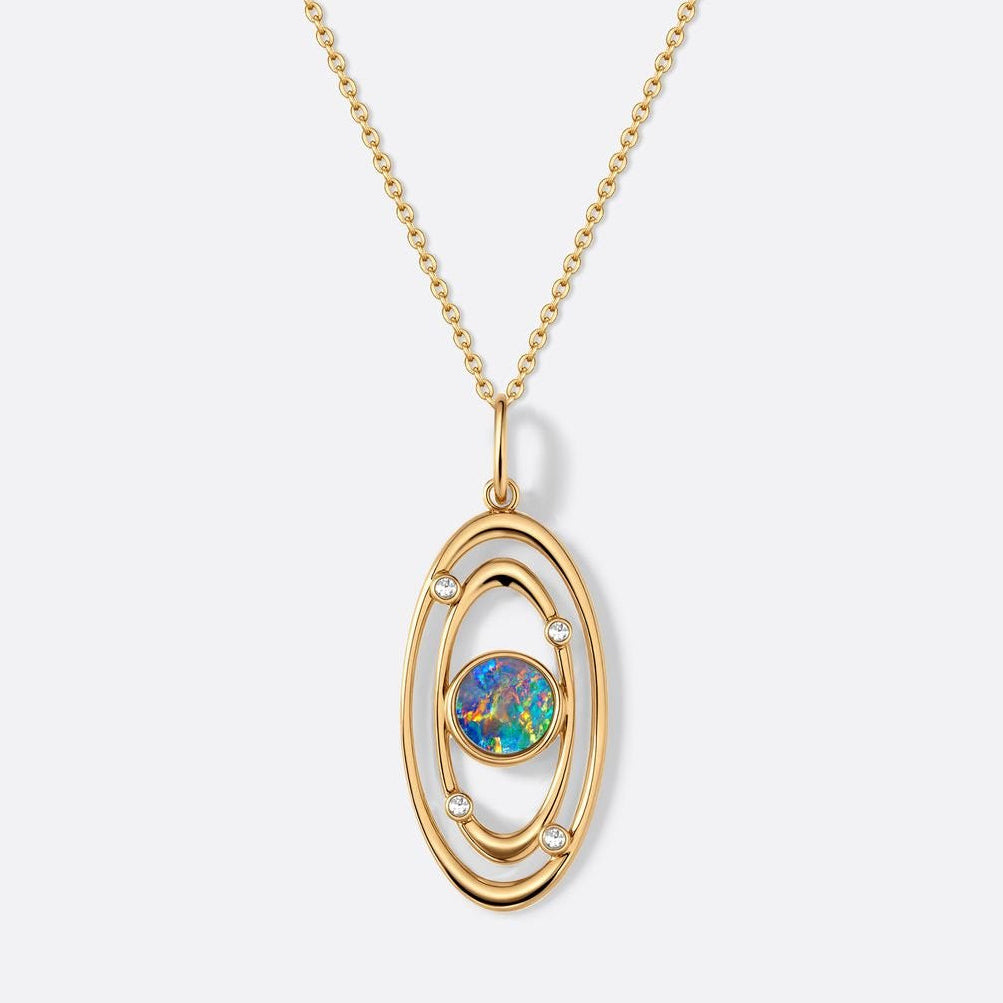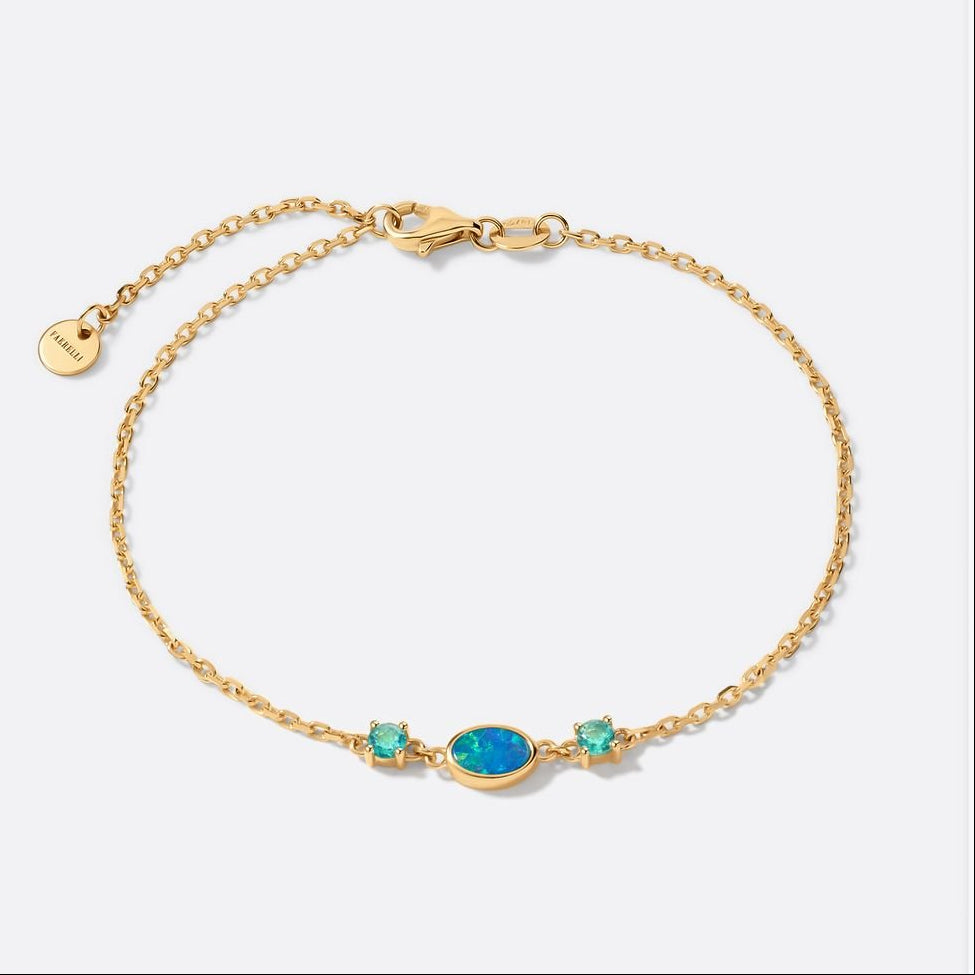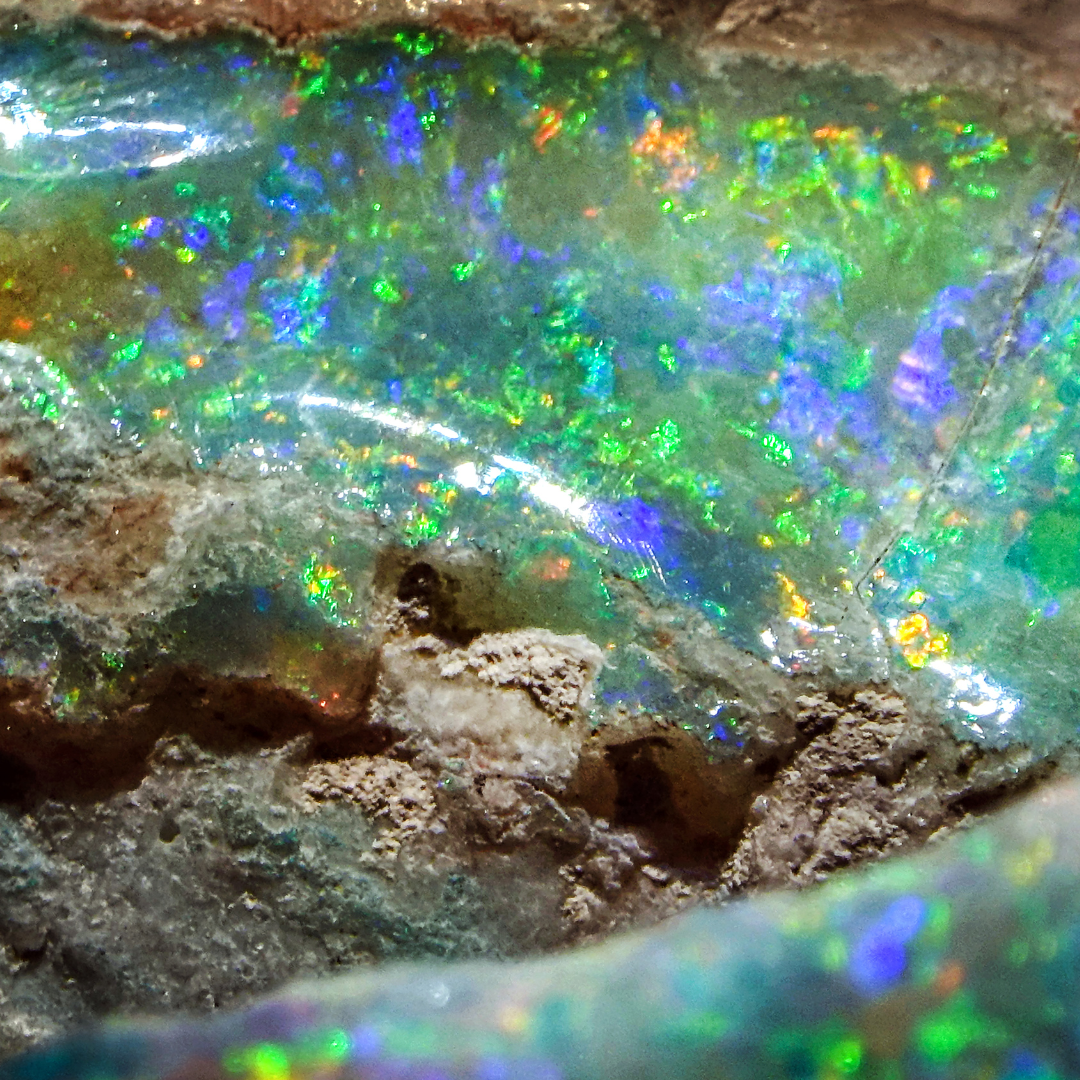
How are opals formed?
A journey through millions of years of geological history
Opals are among the most fascinating gemstones in the world, not only because of their unparalleled play of colors, but also because of the extraordinary way in which they are formed. Each opal tells a story that goes back millions of years - a story that begins deep within the earth and is shaped by the forces of nature. In this post, we'll take you on a geological journey to understand how these extraordinary gemstones are formed. You'll discover how simple silica combined with water and time forms the basis for the dazzling colors that make opals so unique.
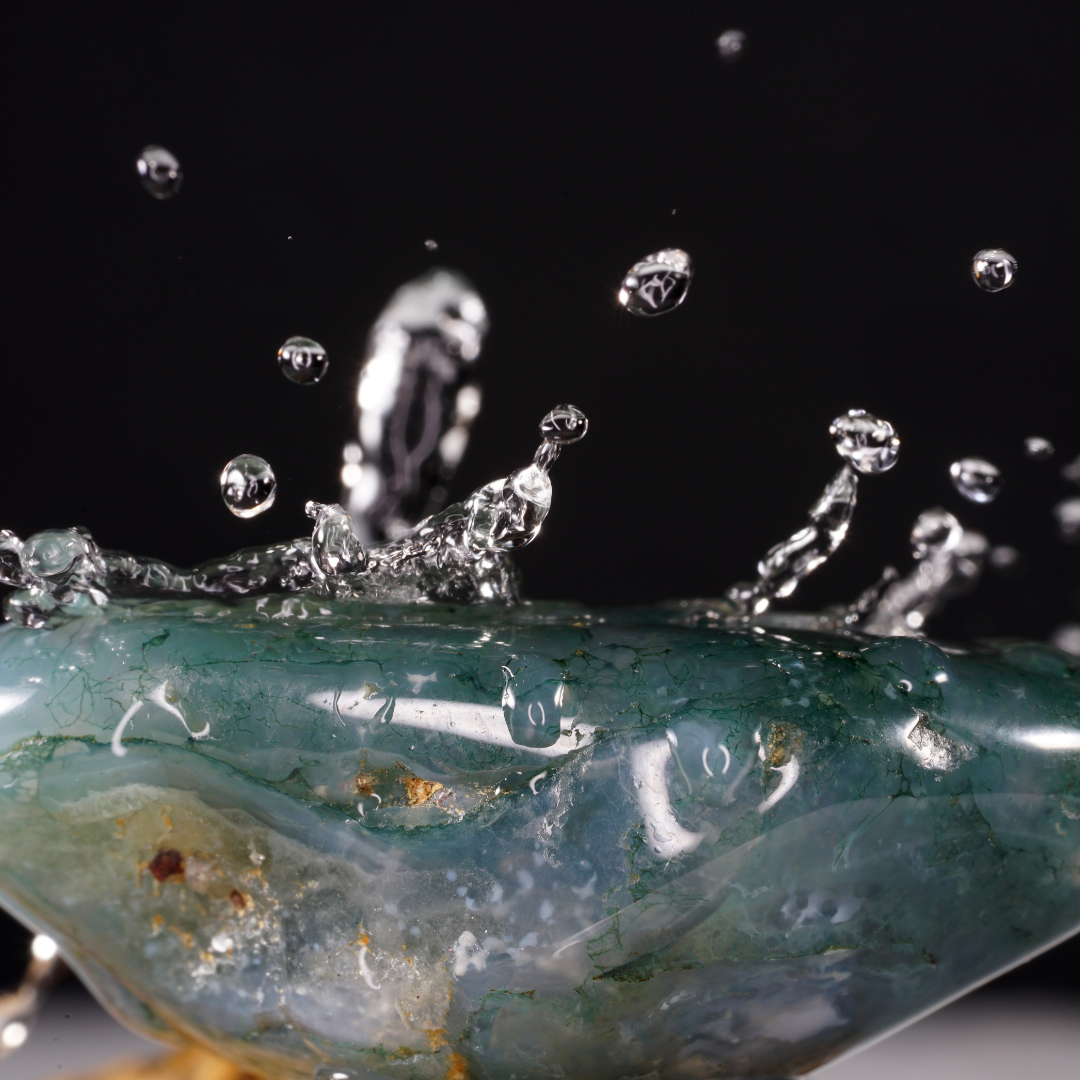
The geological process: water + silicon dioxide
The beginning of opal formation lies deep within the earth and starts with one of the most basic elements - water. This water, enriched with silicon dioxide, also known as silica (H₄SiO₄), slowly penetrates into the cracks and cavities of the rock. When rainwater flows over rocks and soils that are rich in silicon dioxide, it absorbs this silicon dioxide in the form of silica. The cracks are caused by tectonic movements in which the earth's plates are shifted and broken up. The silica-containing water collects in these cavities and forms the basis for the later formation of opal. Incidentally, we find silica in plants, lakes and even in cosmetic products and as a food supplement.
As the water gradually evaporates, the silica remains behind. This silica initially forms a gel that completely fills the cracks and cavities in the rock. Over millions of years, this gel solidifies under the influence of pressure and temperature changes.
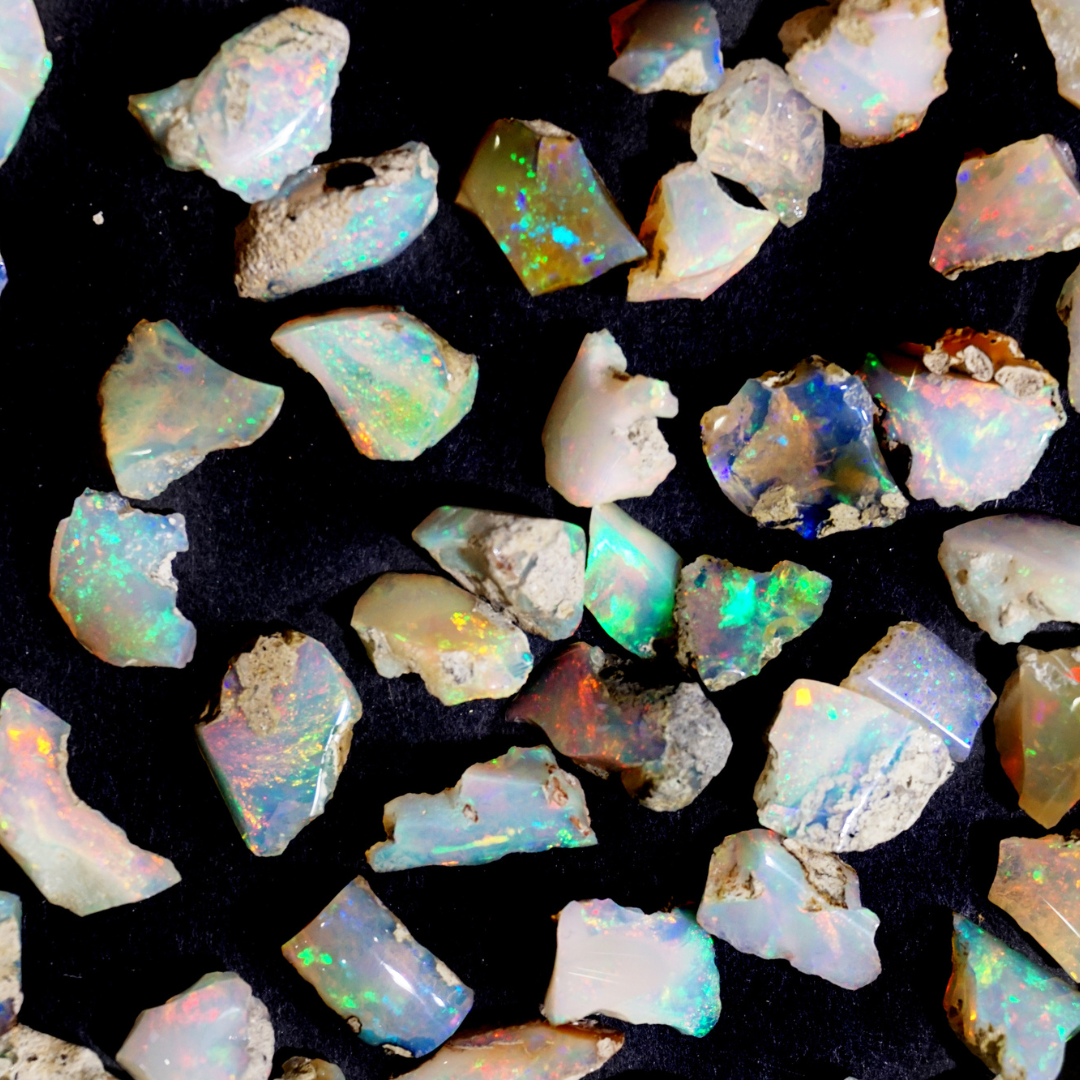
The Role of Pressure and Time in Opal Formation
Pressure and time are key factors in the formation of opals. As the slow compaction process takes place, geological pressure influences the arrangement of the silica spheres in the opal. These spheres, which are in the nanometer range (1 nanometer is equal to 0.000001 mm), arrange themselves in a way that creates the opal's characteristic play of colors. In noble opals, these spheres are arranged in an orderly pattern, which refracts the light and creates the opal's fascinating "fire" - a phenomenon comparable to the rainbow. Common opals, on the other hand, have an irregular structure and therefore do not show any play of colors.
You can find out more in our guide: What are opals? The guide to material structure, physics and play of colors.

Places of origin and their peculiarities
The conditions for the formation of opals vary considerably from region to region and have a significant influence on the properties of the gemstone. Australian opals, which are the most famous and sought-after in the world, are often formed in desert regions where evaporation plays a crucial role. The dry climate of these areas favours the process of silica deposition, which is how the typical, intense play of colours of Australian opals develop.
In other parts of the world, such as Ethiopia, the geological conditions are different, resulting in opals with unique characteristics. Ethiopian opals, often known as Welo opals, are characterized by their vibrant colors and transparency, which are rarely found in Australian opals. The differences in mineral composition and climatic conditions at each location give opals from different regions their individual characteristics, making each stone a unique natural wonder.
Click here to find out the main opal types and their origin.
And click here if you want to learn more about opal mining techniques.
You might also be interested in
Opal jewelry from FAERELLI
Experience the timeless elegance of FAERELLI opal jewelry. Our collections combine the fascinating beauty of opals with exquisite design and masterful craftsmanship. Discover how these unique gemstones are brought to life in stunning pieces of jewelry.
FAERELLI Opal jewelryKnowledge about Opals
Discover the fascinating world of opals - from the different types of opal to the mining techniques, how they are processed, the physical properties and the history of opals. Find out what makes opal jewelry so special and why these gemstones are among the most beautiful in the world.
About Opals



